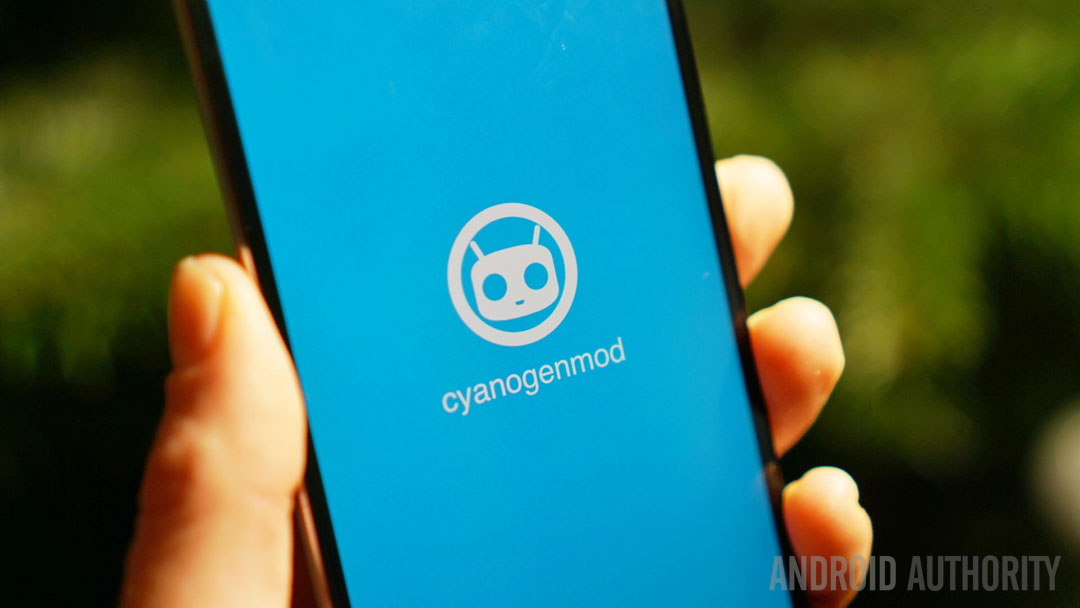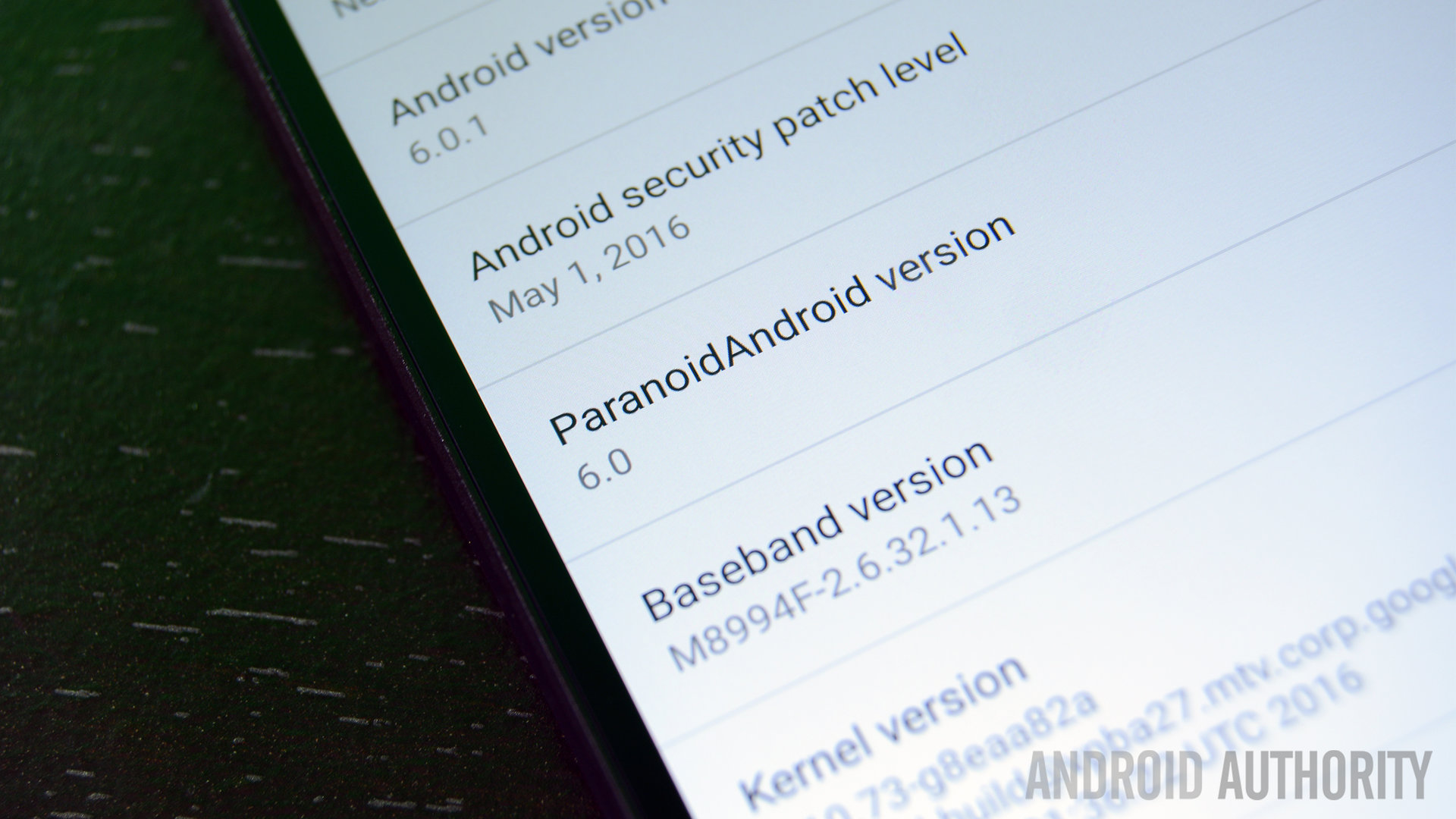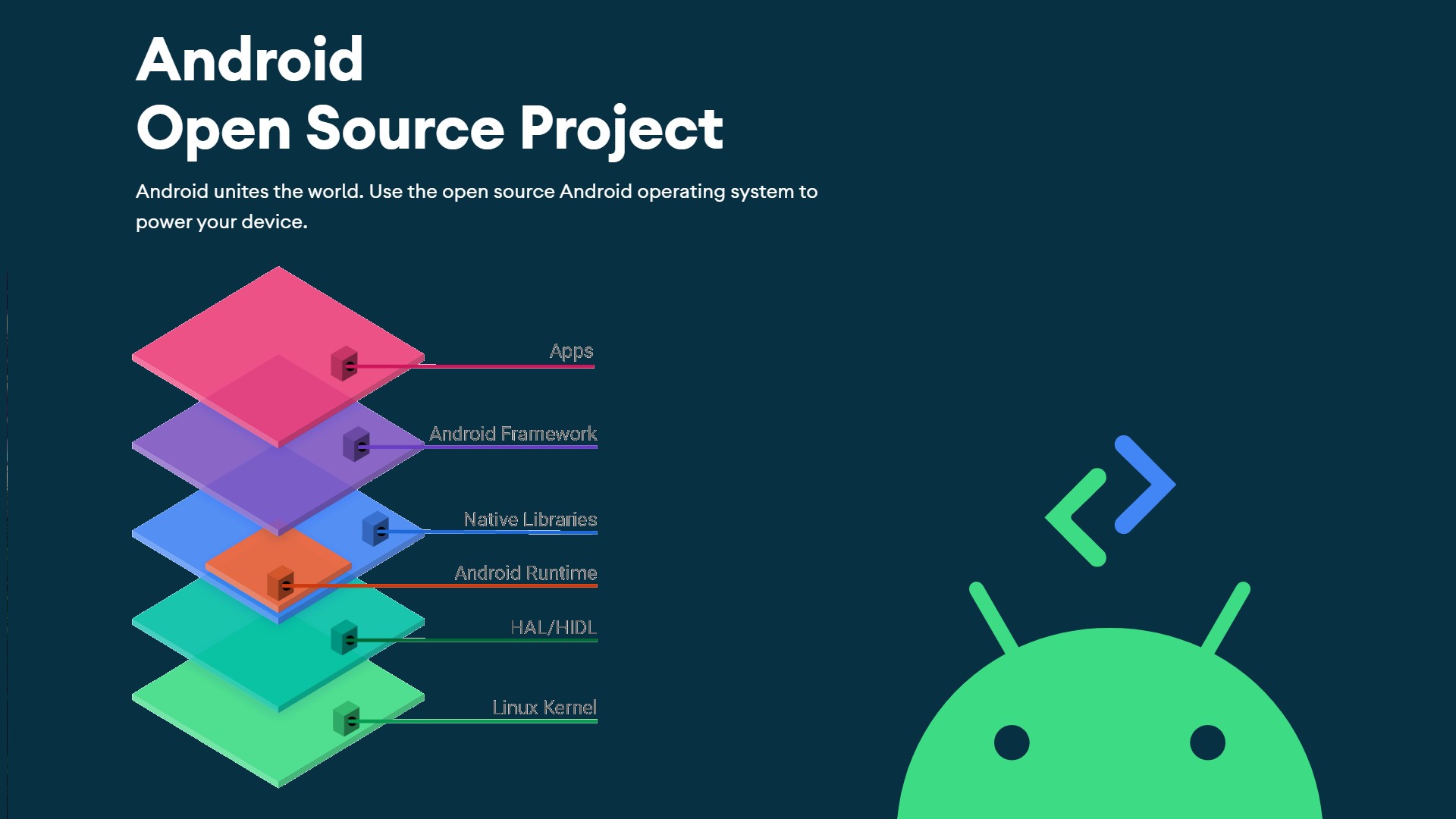Affiliate links on Android Authority may earn us a commission. Learn more.
The current state of custom ROM development

Part of the fun of using Android has always been customization. There’s something exciting about the fact that two people using the same device and the same version of Android can have completely different experiences through icon packs, launchers, and custom ROMs.
There have been custom firmware for Android smartphones for nearly as long as Android has existed. At first, making and using custom ROMs was something for programmers, developers, and enthusiasts; however, the creation (and rapid popularity) of CyanogenMod changed the game. As a growing number of developers contributed to the open-source firmware, CyanogenMod was polished nearly to the point of shining as brightly as AOSP. But what really made CyanogenMod important is that it made the use of custom ROMs more viable to mainstream users.
With each new version of Android, the gap between Android and popular custom ROMs has shrunk
Unfortunately, the future of CyanogenMod appears uncertain, after the open source ROM was forced to fork under the name Lineage OS. Fortunately there are already other remixed versions of Android available, with some of the most popular being Paranoid Android, Resurrection Remix, and Dirty Unicorns.
Android has changed a lot over the past several years of tweaking and refining custom ROMs. In fact, Android Nougat brought in a number of features previously only found in custom ROMs and OEMs’ Android skins, including real multitasking and the ability to reply to text messages from the notification shade. With each new version of Android, the gap between Android and popular custom ROMs has shrunk, which begs an interesting question: Are custom ROMs even necessary anymore?
To answer this, let’s take a quick look at the state of custom ROM development as it exists today. Which ROMs still have active development communities behind them? And what, exactly, do the most popular ROMs have to offer us as Android gets better and better?

CyanogenMod & Lineage OS
It seems only natural that we should start our journey through the custom ROM landscape with the Cyanogens. In the past, I’ve gone into some depth about the creation of CyanogenMod, Cyanogen OS, and Cyanogen, Inc. In fact, I’ve even attempted to decipher where Cyanogen may be going in the future, so we’re going to skip over all that. Instead, we’re going to focus on CyanogenMod as a “new” entity called Lineage OS.
Developers behind the project have stated that Lineage will be a return to its grassroots, community-driven origin
You’ve probably noticed the bloodbath that’s been happening over at Cyanogen, Inc. In a nutshell, the company’s founders departed the company, which recently started plummeting into an uncontrolled nosedive. The fate of CyanogenMod seemed quite uncertain and, sure enough, Cyanogen unceremoniously euthanized CyanogenMod over the Christmas weekend. While this seemed like the end for CyanogenMod, the popular firmware didn’t go quietly as a core group of developers launched a fork of CyanogenMod, which will heretofore be known as Lineage OS.
This name change is more than arbitrary as it means the developers can continue working without fear that the CyanogenMod brand — and, by extension, the firmware itself — could be sold to a third party. In effect, this fork of CyanogenMod will be its own entity, separate from CyanogenMod like a snake shedding its skin.
Now that all those messy details are out of the way, what can we expect from Lineage OS?
The website for Lineage OS is still pretty barebones at the moment, so there’s not a whole lot to be taken there. Of course, the relaunch of CyanogenMod as Lineage OS has only just occurred, so the firmware is, at this point, still very much CyanogenMod. However, developers behind the project have stated that Lineage will be a return to its grassroots, community-driven origin. In other words, the only change that should be happening as we move forward will be a return to firmware “for the people, by the people.”
Paranoid Android
While CyanogenMod is widely held to be the most popular custom Android ROM, most consider Paranoid Android (yes, named after the Radiohead song) to be the second-most popular. It makes sense, though, when you consider that Paranoid Android shares many of CyanogenMod’s mechanics; for instance, theming in Paranoid Android is made possible by the CyanogenMod Theme Engine. However, CyanogenMod tends to be a more no-frills ROM that tries to be faithful to AOSP while Paranoid Android brings some unique features to the Android experience.
One thing that Paranoid Android brings to the table that you won’t find in other ROMs is a featured called Hover; in essence, it’s the ability to click on your notifications and pull up apps in a window that hovers or floats over whatever app you were previously using. The idea is similar to the ability to respond to certain notifications within the notification shade but taken a step further. Rather than having to actually leave your current app to open another, the other app opens and closes from a hovering window.

Paranoid Android brings a lot of unique features to Android and serves to showcase the innovative developers behind the project. In fact, China-based OnePlus snatched up a handful of Paranoid Android developers in 2015 to help them create OxygenOS, which slowed the release of Paranoid Android updates until the following year. Fortunately, the development team has since been filled out and the community of Paranoid Android fans and users remains as vibrant as ever. Recently, Paranoid Android has seen official support on the Nextbit Robin and a bunch of other devices, including the OnePlus range, so needless to say, we’ve not seen the last of this ROM.

Resurrection Remix
After CyanogenMod and Paranoid Android, Resurrection Remix is another custom Android firmware that’s been quite popular. Similar to Paranoid Android, Resurrection Remix has certain elements of CyanogenMod, namely the Cyanogen Theme Engine that’s baked into the ROMs so-called Configurations, which essentially houses all customization options for the homescreen, lockscreen, notification shade, app drawer, and so on.
In fact, it’s the customization options where Resurrection Remix shines the most. A number of enthusiasts consider Resurrection Remix to be the “Godfather of Android customization”, which may be a worthy designation. The goal of Resurrection Remix is often to provide all of the best bits of various open source ROMs, combined with some original add-ons, so it’s a very fluid ROM.
Of course, Resurrection Remix doesn’t only offer customization. As Android has become increasingly polished, so, too, has Resurrection Remix. Lately, there have been official Nougat-based versions of Resurrection Remix to be released for a number of devices, showing that active development is surely ongoing for this much-beloved firmware. There’s also no reason to believe that future versions of the ROM won’t keep customization options dialed to eleven; if you’re one who prefers total aesthetic control over the Android OS, this is one you’ll want to watch as we move forward.
Dirty Unicorns
There are thousands of different custom ROMs available for Android devices since it takes only the know-how and a little initiative. While it’s easy to get lost among the crowd, Dirty Unicorns is another custom firmware with a significant following. Part of its popularity it’s a great compromise between the clean and somewhat minimalistic CyanogenMod and the filled-to-the-brim-with-features Resurrection Remix.
Until recently, CyanogenMod’s Theme Engine (CMTE) was one of the main ways that the Dirty Unicorns ROM provided customization. However, it was recently reported that Dirty Unicorns would be switching to Substratum, which is a newer and more capable iteration of Layers that incorporates elements of Sony’s overlays. This is widely viewed as a smart move since many custom ROMs have begun switching from CMTE to Substratum since its more user-friendly and makes it easier to apply or change themes.
Rather than throwing in everything and the kitchen sink, the development team behind Dirty Unicorns has focused on creating firmware with smart features that were fully baked into the operating system. Per the team’s recent announcements, it seems that the objective of upcoming iterations is to integrate Substratum while taking full advantage of the new features in Nougat.

Where are custom ROMs headed?
We’ve taken a brief look at several of the most popular ROMs used today, taking particular notice of their recent changes or developments. But what is the future of custom Android firmware? Where are ROMs headed?
By all appearances, there are two groups of Android users: those who use custom ROMs and those who don’t (kind a duh, we know). Previously, using custom firmware was for developers and those who were extremely tech-savvy. While getting a custom ROM up and running is still something of a process, the amount of information that’s available and the refinement that has occurred has made custom ROMs easier to adopt than ever. Even those who have no experience with flashing software onto Android devices could probably follow the instructions offered by one of many tutorials available online. However, the question becomes whether custom ROMs are necessary.
As Android is further refined, there are fewer and fewer reasons to use a custom ROM for most users
Android has become a very attractive, refined operating system. The past few iterations of Android — Lollipop, Marshmallow, and Nougat — have brought a number of game-changing features, including granular permissions, multitasking, and powerful battery-saving protocols baked right into the software. Of course, the level of customization Android offers can’t compare with the customization options of Resurrection Remix or even CyanogenMod Lineage OS; however, there are fewer and fewer reasons to use a custom ROM.

We’ve seen some really interesting developments in the tech world. Mobile virtual reality is on the verge of becoming mainstream and the wearable market has grown tremendously. It will be interesting to see whether custom ROMs integrate some of these newer technologies in some way or whether we’ll outgrow our need for custom ROMs.
Now I’d like to hear from you. What do you think about the state of custom ROMs today? Are they still relevant? Do you think that custom firmware still have something to offer to mainstream users or are they becoming a niche? Give us your views on the matter by posting a comment below.